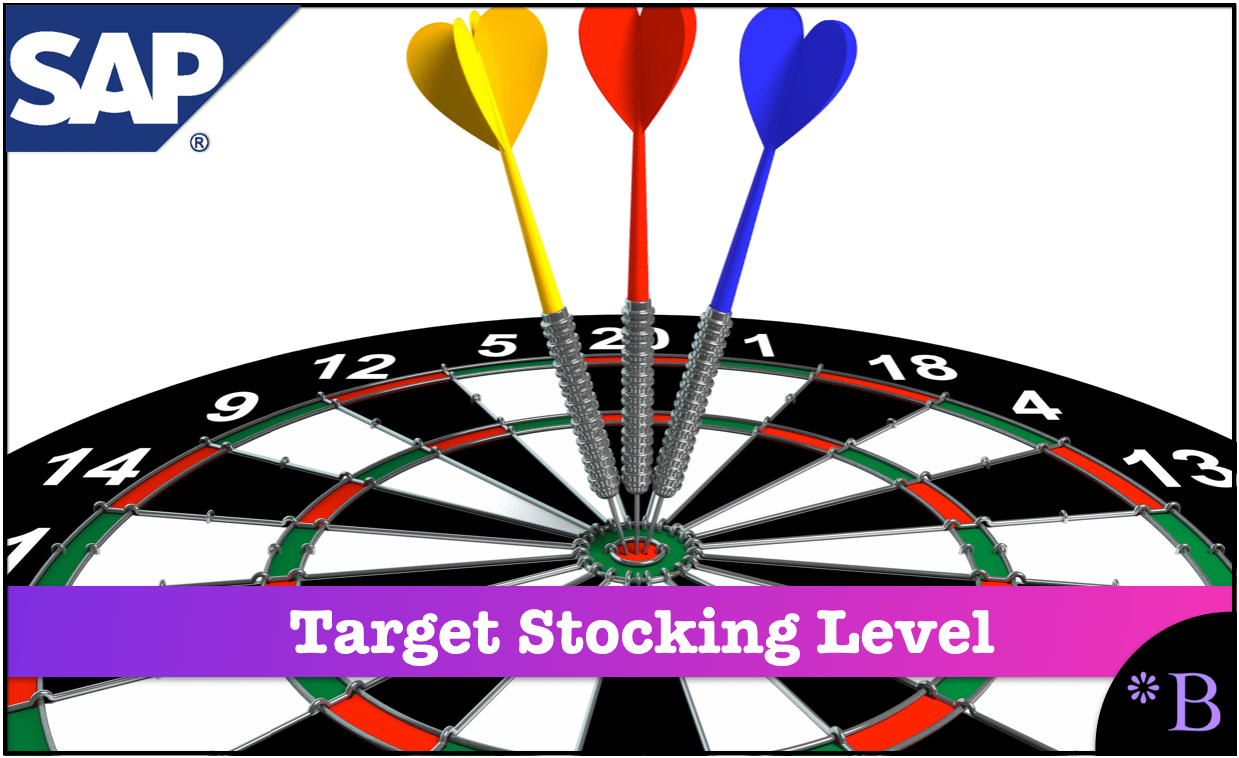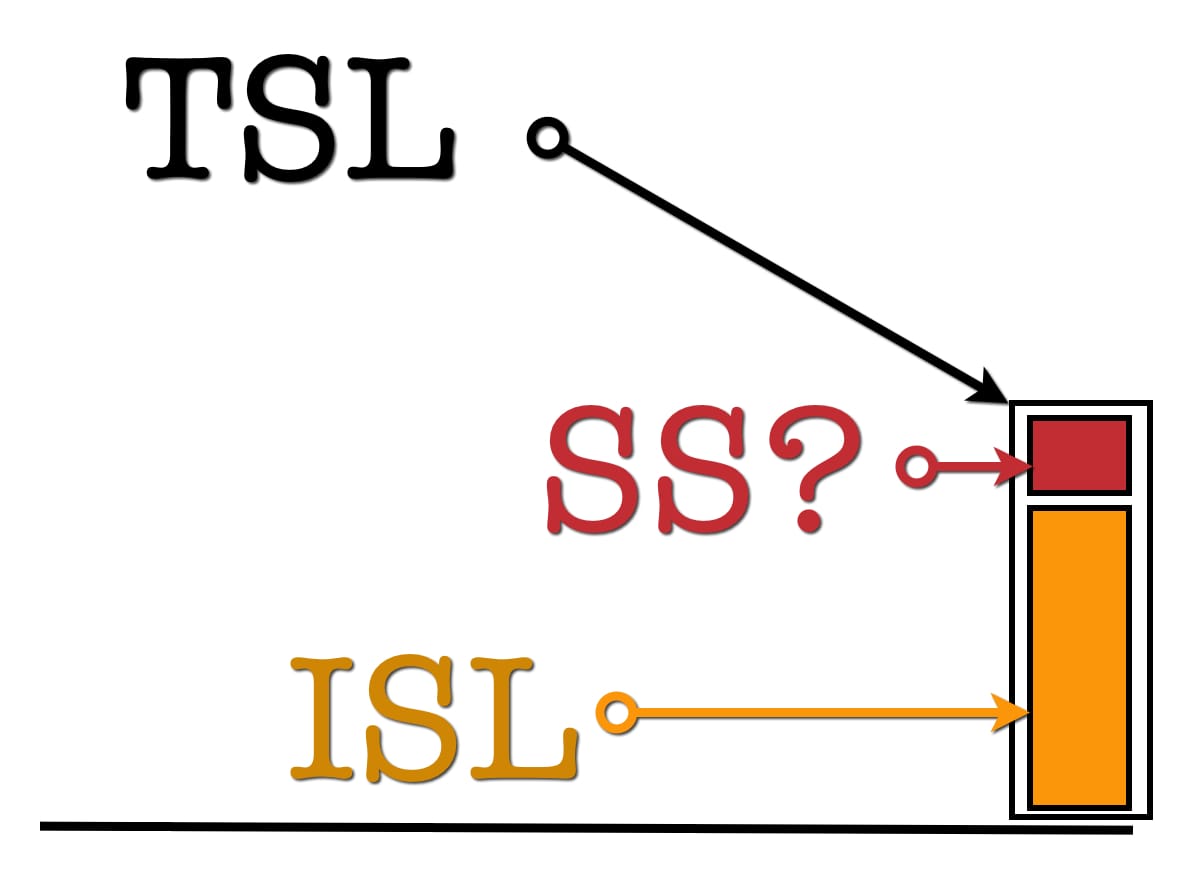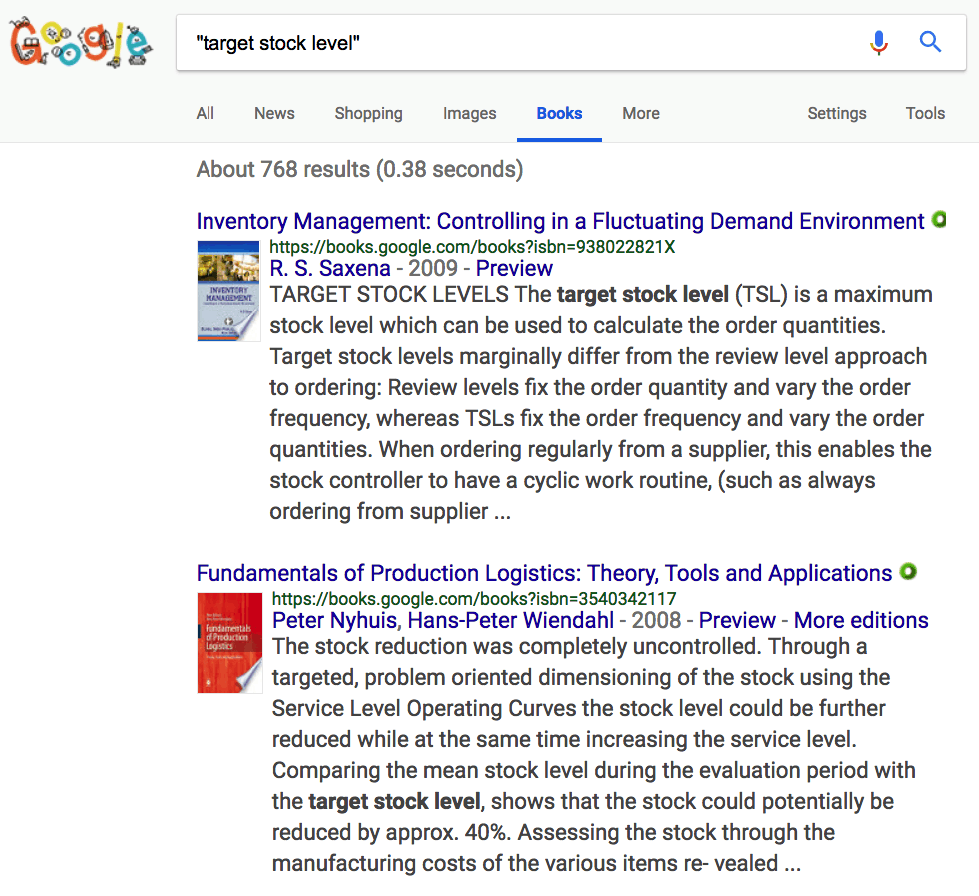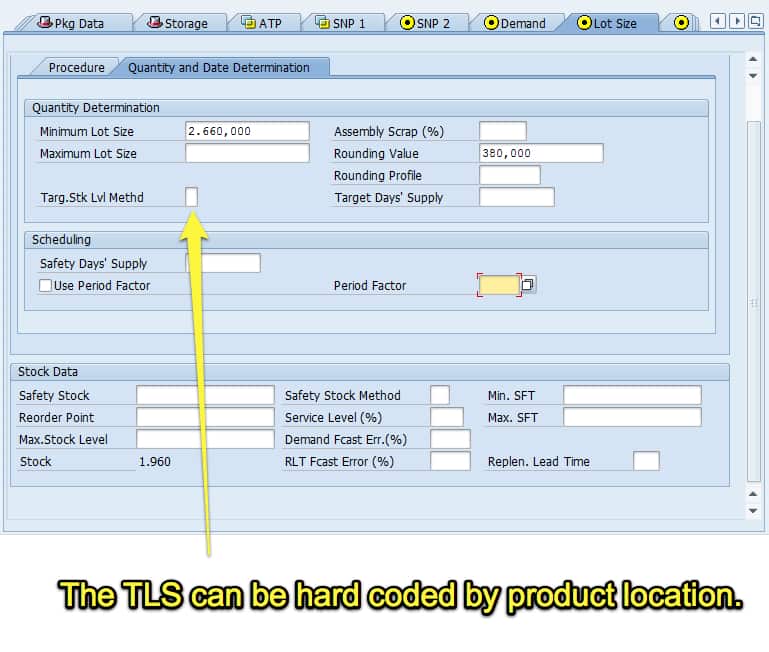How to Best Understand The Target Stocking Level and Minimum Stock Level
Executive Summary
- The target stocking level is the target per product location combination and is a fundamental concept.
- The target stocking level is different from the maximum stock level.
- We cover how different supply planning methods can incorporate a target stock level value.

Introduction
The target stocking level is rarely discussed in companies but is a critical supply chain planning concept. You will learn the components of the TSL and how the TSL can be calculated by external systems and used in ERP systems.
What is the Target Stocking Level?
I have listed a short definition from MCA’s SPO Glossary, which I think is quite good.
TSL is the quantity available to meet demand within the lead time and thus becomes the basis for computing the customer service levels. The TSL for each Location part is determined on the impact of what the TSL will have on the service level. – MCA Glossary
TSL can be considered the target inventory to be held at a product location combination. Stock is, of course, continually fluctuating with issues and receipts. Having a target inventory level for every product location in the supply network is still an excellent practice.
What Does Inventory Optimization Optimize?
Inventory optimization does not optimize the safety stock but optimizes what MCA Solutions has coined the “target stocking level” (TSL) and does so for the entire supply network.
On the other hand, safety stock is calculated independently at each location product combination.
How is the ISL Derived?
Safety stock is only a subcomponent of the TSL. The main functionality in MEIO goes toward calculating the initial stocking level (ISL). From the ISL, the safety stock is derived by combining the ISL and the safety stock the TSL is derived.
The relationship is as follows:
TSL Components
TSL = ISL + Safety Stock
See the graphic below to see how it connects to the safety stock and the ISL or initial stocking level.

The best way of thinking of TSL is as the total stock target at a location product combination. On the other hand, safety stock is simply the specialized subcomponent of the TSL quantity that accounts for the variability in supply and demand.
Safety stock is represented conceptually by the following formula:
Safety Stock = (ISL x Supply Variability) + (ISL x Demand Variability)
What It Means When One Says That “Safety Stock is Optimized”
Safety stock calculated with an MEIO application will be lower than the safety stock calculated by any other supply planning method. However, this is not due to MEIO’s inventory optimization functionality but rather to its multi-echelon functionality. Multi-echelon functionality can see and interpret the relationships between locations that non-multi-echelon systems cannot.
Therefore, while it is true that MEIO applications optimize safety stock, the way it accomplishes this is a bit circuitous.
Socializing This Concept on MEIO Projects
Explaining this fact and validating the understanding of it is integral to MEIO projects’ success because implementing MEIO is, as with other supply planning methods, about more than setting up the system and ensuring it works properly. It is also about educating the system users to make sense of the results. I have witnessed several projects where MEIO has not been adequately explained. The knowledge provided was not accepted, leading to ineffective use of the MEIO planning output. When this understanding has not been socialized within the company, planners and higher-ups will view the MEIO application’s recommendations as a suspect. This typically leads to system output being overwritten manually, which can be initiated directly by planners by supply-chain directors, or vice presidents.
TSL in Common Usage
A search through the web shows that this term is not very common. However, it is not hard to find it listed in books through Google Book Search.

We found a formula for it in the book Best Practices in Inventory Management by Tony Wild, listed below.
TSL = [Usage Rate * (Lead Time + Review Period)] + Safety Stock
This is a similar adjustment to increase the safety stock level:
TSL = [Usage Rate * (Lead Time + Review Period)] + Safety Stock
Safety Stock = [Customer Service Factor * MAD * SQRT(Lead Time + Review Period)
TSL and Target Inventory in SAP
We had never encountered the concept of TSLs in SAP until we searched for it in SAP Help. We found it in the following area:
- SAP ERP SOP
- SAP ERP – The concept exists as a “range” within purchasing
- SAP SCM Forecasting and Replenishment
- SAP SCM SNP
TSL in SAP SNC and Minimum Stock Level and Maximum Stock Level
The one area where TSL is used and used in a live module is in SAP Supply Network Collaboration or SNC. Interestingly, it is not called a TSL but is called a minimum stock level and a maximum stock level. We quote from the book Supplier Collaboration with SAP SNC.
The projected stock and actual stock on hand are compared with the minimum and maximum stock levels agreed upon by customer and supplier for a location product. If the threshold values are not reached, or are exceeded, alerts are generated. – Mohamed Hamedy and Antia Leitz
This concept of the minimum and maximum stock levels is quite essential. This sets a target threshold that determines if stocking levels are out of their boundaries. However, planning systems usually don’t have this concept of a minimum stock level and a maximum stock level. At first blush, the reorder point may seem like the minimum stock level. However, the reorder point triggers before the minimum stock level. The maximum stock level has no corollary whatsoever.
The Concept of Planning Alerts
In planning systems, alerts are often used for supply planning. A typical alert would be to generate an alert when the stock reaches a particular level. However, the trick is in calculating what the minimum stock level and maximum stock level should be.
There is no perfect answer as to how to calculate this. However, it should be calculated external to the system (as few systems will calculate this for you). Of course, a mathematical formula should calculate the value for the entire product location database. If we think of obsolete inventory calculations, this concept of calculating a minimum stock level and the maximum stock level is essentially the same.
Integrating a Pre-existing Stock Level with Different Supply Planning Methods
When a company implements a new supply planning method, it faces a pre-existing stock level setting process that the firm uses. The company will have usually invested significantly in and is comfortable using it.
I will take two supply planning methods as examples: CTM (allocation) and inventory optimization multi-echelon planning (MEIO).
- MEIO can intelligently calculate target stocking levels by co-planning inventory using the mathematics of effective lead time.
- The target stocking level is then published to the ERP or advanced planning systems. Either system can then be set to respect these TSLs.
At several clients that I worked with, the concept of multi-echelon planning was not well socialized (a common problem on optimization projects). The supply chain’s VP and director required that the planners maintain the same days of supply they had before the MEIO implementation.
Interestingly, when I asked the team that managed the MEIO application if they thought the solution had been socialized, they said “yes.” However, when I asked the business the same question, they said it had not.
Therefore, in this example, the company had two methods of maintaining the target stock level:
- The old way through a day supply
- The new way (being MEIO) and these were incompatible. What about another method? For instance, what if a company wants to integrate its current target stock level with SAP CTM? Below, we can see where the TSL is set in the product location master.

Conclusion
Target stocking level is not common in the industry, but several books cover it and work with the concept.
The concept is powerful because it manifests all of the complex inputs of stock determination into a single number or a number range. These number(s) can then be compared to actual stock values to develop stock transfers and unserviceable item repairs (for service parts) or communicated to suppliers or customers using a collaboration tool like SAP SNC.
- Meshing a pre-existing target stock level with a new supply planning method can be challenging. A TSL connects differently depending upon the supply planning methods that are to be used.
- As I discussed, keeping pre-existing days of supply value in addition to a TSL calculated by an MEIO application makes little sense. However, a further question is whether the currently used target stock system makes sense. This a question that must be analyzed on a case-by-case basis.